SalesForce.com Takes a Stand Against Bigotry in Indiana


Less than two weeks after Utah passed a landmark LGBT rights bill that had the support of the Mormon Church’s leadership, Indiana has taken a massive step backward on human rights. Yesterday Gov. Mike Pence signed the Religious Freedom Restoration Act (RFRA, or SEA 101), which opponents claim legalizes discrimination by allowing businesses to decide with whom they choose to provide goods and services.
While the governor insisted in a press statement that “this bill is not about discrimination,” or else he would have vetoed the legislation, the reaction from the business and sports communities has been swift. Ten days before the men’s basketball Final Four weekend starts in Indianapolis, the NCAA expressed concern for its employees as well as Indiana’s viability for hosting future events. One of the most vocal firms has been one of the largest cloud computing companies in the world.
On Thursday SalesForce.com, via its CEO’s tweets, has said it will reduce its investments in Indiana.
The origins of this bill lie in the Citizens United v Federal Elections Commission and Burwell v Hobby Lobby Stores U.S. Supreme Court decisions. The former emboldened many advocacy groups to push for legislation such as SEA 101 in the belief that a business could exercise the same First Amendment, or “free speech," rights as people -- even though that was not the intent of the Supreme Court justices' majority opinion. The majority wrote, however, that “if the First Amendment has any force, it prohibits Congress from fining or jailing citizens, or associations of citizens, for simply engaging in political speech.” So, we see this logic stretched to the cases of bakery owners getting into hot water (or not) for refusing to make a wedding cake for a gay couple. The Hobby Lobby case, as of last year, allowed closely held for-profit corporations to be exempt from a law if its owners have a religious objection to a law.
Hence we have Indiana SEA 101, which states: “A governmental entity may not substantially burden a person’s exercise of religion, even if the burden results from a rule of general applicability.” In layperson’s terms, if a business or any entity does not want to deal with a person for whatever religious reason, so be it. Even though the LGBT community is not mentioned anywhere in the bill, what opponents fear is that a business owner, such as a hypothetical bakery — or any business for that matter — could deny a service to gays and lesbians for any religious reason. And as Forbes writer Ben Kepes has stated, the same could apply to Jews or any other religious minority.
While Gov. Pence insisted any concern over his signing of this bill is a “misunderstanding,” USA Today noted that the bill was signed in private, and he was joined by supporters of the bill from the Indiana legislature, prominent social conservatives, Orthodox Jews, and Franciscan monks and nuns. Apparently leaders from the Episcopalian and Unitarian churches, LGBT community, or even a token imam, were not invited.
Several tech CEOs, including SalesForce.com CEO Marc Benioff, on Wednesday urged the governor to veto the bill:
“As leaders of technology companies, we not only disagree with this legislation on a personal level, but the RFRA will adversely impact our ability to recruit and retain the best and the brightest talent in the technology sector," six CEOs and a company president wrote in an open letter to Gov. Pence. "Technology professionals are by their nature very progressive, and backward-looking legislation such as the RFRA will make the state of Indiana a less appealing place to live and work.”
Benioff has been especially critical, saying the Religious Freedom Restoration Act has outraged his company’s workforce and customers to the point that Salesforce.com will reduce its investment in Indiana. Kevin Brinegar, CEO of the Indiana Chamber of Commerce, also criticized the bill:
“In our eyes, the law is entirely unnecessary. The reactions to it are not unexpected or unpredicted; passing the law was always going to bring the state unwanted attention.”
Politicians pass bills such as SEA 101 because they feel that they have to play to their base. Companies such as SalesForce.com, however, have to listen to their stakeholders, so expect the backlash against Indiana to serve as a warning to other states that passing such a law is not only discriminatory, but also a clumsy way to sabotage the local business community.
Image credit:Jasont82
'Freedom Seal' Certifies Companies Committed to a World Free from Slavery
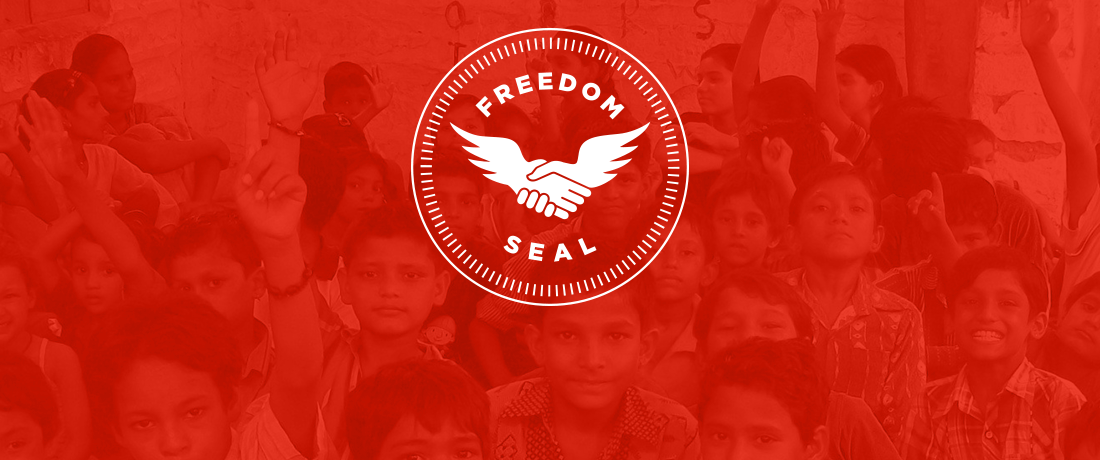

We have covered many ethical certifications here at TriplePundit, but one that should especially resonate with businesses and consumers is the Freedom Seal. Launched on Wednesday by the anti-human trafficking and slavery NGO Tronie Foundation, the Freedom Seal is the culmination of the organization’s 15-year quest to stop slavery while advocating for survivors of human trafficking across the world.
Rani Hong, who was sold as a slave in India at the age of 7, heads the Tronie Foundation, which she co-founded with her husband, Trong Hong, who himself was recruited as a child soldier in Vietnam when he was 9 years old. The organization’s executive committee developed a plan in 2010 to end the global human trafficking and slave trade in 25 years. In addition to offering support services for human trafficking survivors, the foundation works with international organizations such as the United Nations, as well as businesses, to raise awareness about the impacts of slavery. By eliminating the demand for goods and services produced with slave labor, the Tronie Foundation aims to end slave trade, which continues to fester on all of the world’s continents.
Businesses interested in applying for the Freedom Seal must go through an application process that includes three broad steps. First, the applicant has to demonstrate that it has raised awareness about human trafficking and slavery with its customers and stakeholders. Next, the company has to develop a local program that supports human trafficking survivors. Finally, established systems that prevent slavery within a company’s goods and services must be verified by the Tronie Foundation before they can use the Freedom Seal. Fees depend on a company’s revenues, and the organization’s staffers vet a company’s documentation again after two years.
According to the Tronie Foundation, the Freedom Seal is important for companies to consider because other certifications do not address human trafficking problems with enough rigor. Other seals focus on social responsibility in general; no other certification program covers human trafficking and slavery with greater depth. The Tronie Foundation also goes beyond checklists and donations in its fight against this growing problem: It requires companies to develop specific policies related to human trafficking and slavery and requires companies to get involved with the care and advocacy of survivors.
While many consumers want to believe human trafficking is long gone since the era portrayed in movies such as "12 Years a Slave," the evidence suggests slavery is a growing problem that is far too profitable for the few who savagely thrive off of the misery of many. According to the International Labor Organization, about 21 million people, 55 percent of whom are women and girls, are trapped in slavery worldwide. The human trafficking trade is a US$150 billion annual business, two-thirds of which is from commercial sexual exploitation. The other third results from agriculture, domestic work and other economic transactions.
Many of these people trapped into forced labor paid hefty “recruiting” fees in the belief they were scoring gainful employment: CNN has estimated that half of the foreign workers trapped into forced employment within the United States paid an average of US$6,150 to headhunters who lied about the nature of the work promised to them.
Clearly, more work needs to be done to stop human slavery. The electronics industry has committed to eliminating forced labor within the sector. And on this side of the pond, HP says it is the first information technology company to require its suppliers to directly employ migrant workers within its supply chain. Unfortunately, far too many people, often the world’s poorest and most vulnerable, are suffering from one of the worst human rights tragedies, and businesses need to take a lead on stopping this odious practice.
Image credit: Tronie Foundation
Leaders: Place Company Values on the Same Level as Profits
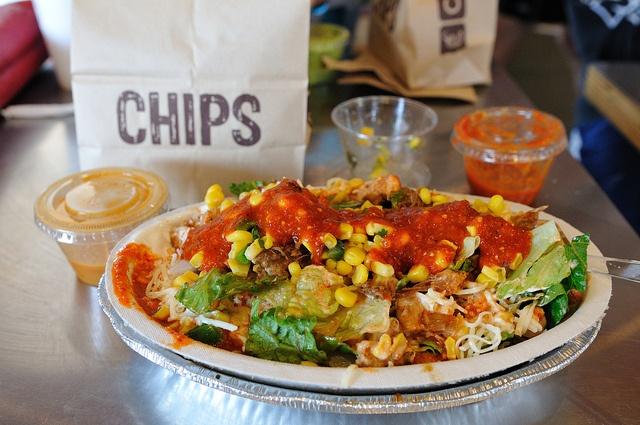

By Luis Gallardo
Carrying the weight of your business, profits, employees’ well-being and your own conscience can be back-breaking. To ease the burden, activities that aren’t directly tethered to the bottom line tend to fall by the wayside.
But there are subtle factors shaping your financial success beyond hard numbers. If you zero in on end results alone, you’ll miss these quiet forces that play a major role in advancing or stalling your company’s progress.
The connection between profits, employee productivity, and organizational values is undeniable. When your employees understand how every action ties back to a bigger purpose, they’ll take more pride in their everyday tasks, be more productive and exude an authentic outward appearance. Setting high standards for your organization — and living up to them — will encourage others to support your vision, too.
But writing out a few company creeds won’t get you on track to driving real profits. To incite real change — internally and externally — employees and consumers need to get behind your values.
Give your mission meaning
Consumers are increasingly concerned with what happens behind the scenes. According to a study by Cone Communications and Echo Research Group, 82 percent of U.S. consumers consider corporate social responsibility when deciding which products or services to buy and where to shop.
People want to know that their purchase decisions won’t produce negative externalities, so they’ll often investigate brands to make sure something like buying new shoes won’t inadvertently make life worse for someone on the other side of the world. They want to use their money ethically whenever possible, and that means supporting businesses that live up to certain moral standards.
Chipotle did a great job of sticking to its values despite the risk of losing business over a carnitas shortage in January. When the company discovered that a major pork supplier had violated its standards, Chipotle pulled carnitas from the menu until it found a solution. No company wants to disappoint customers on a large scale, but Chipotle used the problem as an opportunity to showcase its values, earning respect and loyalty in the long run.
Bring your values to life
Before your standards can resonate with the outside world, you have to promote them within your company. You can’t expect employees to contribute to overarching goals if they don’t fully understand them or know what the journey should look like. And when your team is united behind a common purpose, it gives them a sense of belonging and bolsters engagement.
In fact, one report found that employees who know their company values are more engaged than those who don’t. Engaged employees generally have better attitudes and are more productive, which directly affects a company’s bottom line.
Revenue and results are linked to employee performance, which ties back to pride and belonging. This ultimately starts with believing in an organization’s value system. To rally your organization around a set of shared beliefs, start with these four steps:
1. Define your vision. Spend several months conversing with colleagues and employees and crafting stories that reflect what your organization stands for. Once you have a clear picture, you can start promoting your standards externally. Successful companies such as LEGO and Whole Foods Market stand behind concrete organizational values. Every story they share and every action they take ties back to those, which creates an authentic brand experience.
2. Lead by example. Actions speak louder than words, and the most powerful influencers on behavior tend to be real-life examples. When you lead by example, you set clear expectations for your organization. To take hold in your company, values should be reflected 80 percent through actions and 20 percent through storytelling.
3. Bring in role models. Company leaders should be living examples of the values they preach. But you can also bring in external role models who reflect the values you want employees to demonstrate to further engrain these concepts.
4. Recognize and reward desirable behavior. Ultimately, you want employees to model behavior that aligns with your organization’s values. To promote these actions, recognize and reward internal heroes who exemplify your core values at all levels of the organization. Values-based recognition programs provide a confidence boost and make workers considerably less frustrated with accomplishing tasks. People will work harder if they know you appreciate it.
When the market takes a dip or you’re tempted to compromise your core values for the sake of profits, remember to keep the bigger picture in mind. If employees feel you losing sight of the company’s guiding principles, their trust in you as a leader will weaken, and it will be much harder to reestablish your culture.
You may feel like the weight of the world is on your back, but when you have strong company values, they’ll help shoulder the burden and instill a renewed purpose in everything you do.
Image credit: Flickr/Michael Saechang
Luis Gallardo is CEO of Thinking Heads Americas, a team specializing in developing and structuring the ideas, values, projects, and contents of the clients it represents. Luis is the former president of brand marketing at Burson-Marsteller for EMEA as well as director of global brand strategy at BAV Consulting. He’s an award-winning author and holds an MBA from IMD in Switzerland and a master’s degree in international relations from the Lancaster University in the U.K.
JPMorgan Analyst: ‘2014 a Historic Year for Investment in Renewables’


Editor's Note: A version of this post was originally published on the IEEFA blog.
By Jim Flood
Energy Finance 2015, a four-day training program for environmental advocates and attorneys, convened last week at the New York University School of Law.
On day two, Paul Coster of JPMorgan Chase made headlines by saying, “2014 was a historic year for investments for renewables.”
Coster knows whereof he speaks as the lead alternative-energy analyst for JPMorgan Chase and a seasoned Wall Street figure who has a deep understanding of these markets.
Highlights from his talk included:
- New investment in renewable generating capacity exceeded fossil fuel-based capacity investment for the first time last year.
- Investment in renewables reached $310 billion, up by approximately 16 percent year over year, led by the Asia Pacific region, by solar and by asset finance, even though renewables still make up a very small portion of global energy generation (lots of upside there).
- By the end of 2015, more than 700 gigawatts of wind and solar capacity will be installed globally, and this number will double by 2020.
- Cash available for distribution to investors is likely to also double, resulting in an industry-wide dividend of about $145 billion. A growing portion of this will flow into publicly traded Yieldcos, which are structured around renewable-energy investments so that they generate predictable cash flows.
Carbon-regulation compliance is 'front and center,' and renewables are now mainstream
Another Wall Street presence of note: Julien Dumoulin-Smith, a utility-industry savant from UBS Investment Research, who noted that carbon-regulation compliance is “front and center” today for energy companies.
Dumoulin-Smith said in a Monday afternoon presentation that a cap-and-trade exchange for carbon is inevitable and that it may first emerge regionally, and could do so without a government mandate.
Renewables are now mainstream, he said, as the economics of wind and solar continue to improve and as energy companies engage en masse in “de-risking” by becoming increasingly diversified through investments in wind and solar. Much of those investments, he added, will be driven by persistently low interest rates, and he added this caveat: low rates may not last forever.
Enforcement of EPA air-quality standards around “criteria pollutants” — Dumoulin-Smith pointed to these EPA standards — have driven the trend toward more and more retirements of coal-fired plants.
Why the U.S. coal-fired buildout failed
During a panel discussion -- which explored the risks that rose to keep an ambitious national coal-plant agenda from coming to pass 10 years ago -- IEEFA’s David Schlissel said the coal-industry push would have succeeded if not for citizen opposition.
“If there had been no environmental movement between 2005 and 2015, a lot more plants would have been built because no one would have been speaking truth to power,” Schlissel said. “You can’t quantify it, but certainly it’s essential for people to be there doing what all of us in this room do.”
Schlissel noted that out of 249 coal plants that were scheduled to be built in 2007, 183 have been canceled, 22 were completed and 44 are in limbo. The scheme faltered, he said, because the plants became economically untenable due to skyrocketing construction costs, the rise of cheap natural gas, widespread citizen opposition and increasing skepticism on the part of investors.
Additional perspective from Tom Sanzillo, IEEFA’s director of finance: “Anything we could use to disrupt the ability of the industry to get these coal plants built, we used,” including litigation, talking directly to state governors, and meeting with bank officials to discuss the financial risks of investing in coal-reliant assets.
A report from grassroots central: Batavia, Illinois
Also in the spotlight at Energy Finance 2015: Betsy Zinser, a resident of Batavia, Illinois, who has been prominent in raising some of the many ongoing questions about the Prairie State Energy Campus, a construct of Peabody Coal that supplies overpriced electricity to dozens of communities around the Midwest.
Zinser noted that Peabody built and sold the plant at a time in which most cities and towns in the region were moving away from coal-fired electricity -- and that Peabody marketed it anyway as a low-cost, stable source of energy. Quite the opposite has happened.
While the original estimate for the construction costs was $2.5 billion, Zinser noted, the final cost was $5 billion, the debt incurred was double the original estimate, and 50 percent of the cost of electricity from Prairie State now goes toward debt service.
Zinser said community activists in Batavia have helped initiate the following:
- A Securities Exchange Commission investigation into how the Prairie State deal went down;
- A formal request by the city of Batavia to the attorney general of Illinois to open an investigation;
- A ratepayer class action lawsuit;
- Support from Illinois state legislators.
IEEFA’s Board President Larry Shapiro, in response to a question from an audience member about the most effective community organizing tactics, said this: “Find the people in the relevant community who are as different from you as you can possibly imagine. If you want to win, you better make alliances with all kinds of different people, most of whom are going to be a lot different from who we are.”
Image credit: Flickr/Lawrence Murray
Jim Flood is an IEEFA contributor.
Changing the Nature of Corporate Giving to Address Poverty

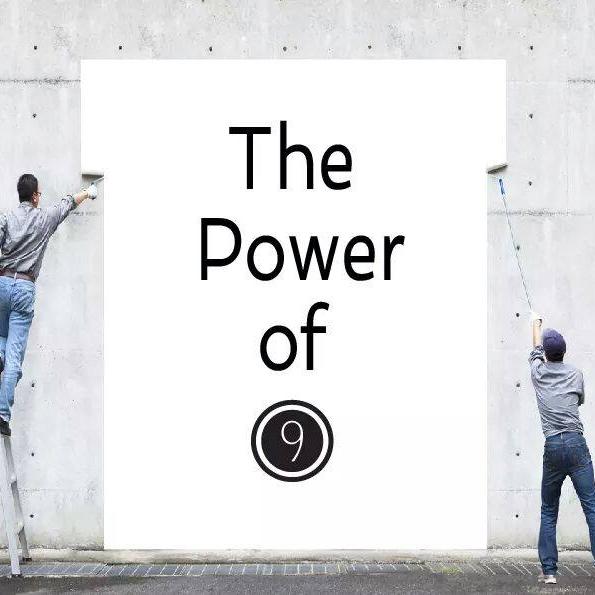
By Derek Young
Poverty is a crushing and terrible condition. It is a root cause of so many symptoms that stagnate progress and hold back opportunity. It is a disease that continues to exacerbate inequality, food insecurity, failures in our educational system, crime, drug addiction and hopelessness. It is the ultimate barrier to advancement, and it must be fought with every tool at our disposal.
The U.S. poverty rate is estimated at 15.1 percent. That means 15.1 percent of our population is living without enough money to meet basic needs and services.
Poverty is a serious issue across America, but it's especially serious in my home city of Dallas. Nearly a quarter of the city's 1.18 million residents live in poverty, and that number is rising rapidly. Between 2000 and 2012, the poor were the fastest growing segment of the population in Dallas.
Among the main causes for poverty are unemployment and underemployment. Not having a job or not having a job that pays a fair wage are at the very core of our battle against poverty. Nationally, the unemployment or jobless rate is around 7 percent, while underemployment impacts 16 percent of our citizens. Here in Dallas, new information shows that a whopping 39 percent of Dallas lives in “asset poverty,” which means that they do not have the financial means to support a household for three months at the federal poverty level. That is 12 points higher than the still-too-high 27 percent of people living in asset poverty nationwide.
It is absolutely clear that not only do we need to create jobs, but those jobs must provide a fair, living wage if we are reduce the number of people dealing with asset poverty and underemployment.
So, what do we do to help? Can creating jobs provide the dignity and financial stability needed to counter the crushing effects of poverty? Furthermore, who should be responsible for this? Government? The nonprofit community? Is it always to be someone else’s problem, or should this be an issue that the for-profit community embraces and seeks to solve? Is there a way for business to help fight poverty?
The traditional corporate giving method is well documented: A company identifies a cause or agrees to partner with a nonprofit, and then dedicates an amount of money to provide. Today, the most philanthropic-minded companies give between 5 and 10 percent of their profit away. Most companies tend to give less. These philanthropic-minded companies are doing great things, but their business model remains one in which the primary goal is to succeed financially. Only when they are able to do that do they turn their attention to social need.
The introduction of social entrepreneurism has begun to eat away at this model. Companies like TOMS Shoes and Warby Parker have built their business model around addressing a specific cause and have found that doing so has only helped their success not impede it. The question is: Can we go further? Can we develop a model in which a for-profit enterprise can be fully committed to solving a social problem first and making money second?
One company thinks the answer to that question is yes.
9HappyPeople is the result of a group of people who believe that there is a way to harness positivity, produce a great product and provide a solution to poverty -- all by selling T-shirts. It is a reinvention, in a way, of the corporate model -- with a focus on leveraging city-specific subject matter expertise to deliver the majority of profits to organizations and enterprises that are capable of addressing underemployment and asset poverty in Dallas by creating jobs.
The Dallas-based startup committed to cap corporate profit at 9 percent and invest the rest to create jobs. The company invests that money to help create new businesses that will provide a living wage; to support of nonprofits addressing joblessness and poverty; and to help deliver job training and job placement services. The company's goal is: for every T-shirt sold, it creates a job for someone who needs one.
9HappyPeople plans to harness the expertise of leaders in the cities in which it works. By building volunteer councils to help with identifying where we can donate money and to whom we will actually donate we can build and effective process of ensuring that we are getting money into the hands of people who are prepared to make the best use of those funds and are most capable of creating job opportunities for those in need.
We believe in The Power of 9, and how our collective voices can improve the state of the world. If each of us touches the life of just nine people and each of them pays it forward, within 9 links we would cover the entire population of the United States. In essence, a t-shirt can help fight poverty by creating jobs. That is the Power of 9!
Image credit: 9HappyPeople via Facebook
Derek Young is the President of Derek Young & Associates, a sustainability and Social Purpose consultancy based in Dallas, TX. He is an advisor to 9HappyPeople.
'Bubble-Wrapping' the Virtual Workforce
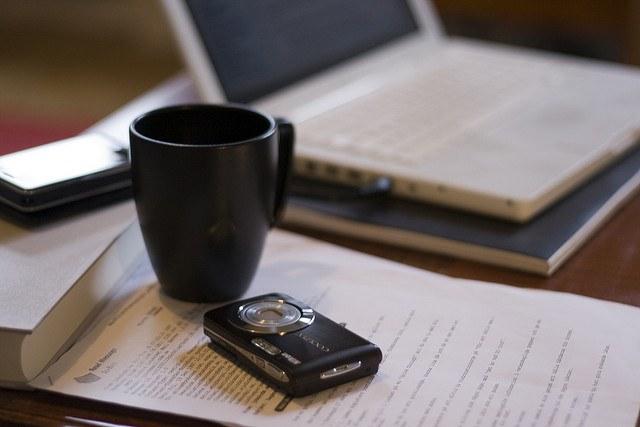

By Peylina Chu
Working as a member of Silicon Valley’s growing virtual workforce, surrounded by the comfort and amenities that are ever-present in a seemingly safe home environment, you never expected that beloved office chair would suddenly and aggressively fail you. Well, it did.
Now here you sit — wrist adorned with a hefty cast, hindering your ability to write the code that puts food on the table.
Creating a culture around virtual worker safety doesn’t begin and end with replacing the broken office chair. There is a web of concerns to address, and it’s easy to get tangled up. With so much complexity, where does a company begin, and what factors should be considered a priority?
Protecting the safety of all employees
Technology companies of all shapes and sizes may not be aware that it is their legal obligation to ensure employee safety and comfort. Regardless of employee location — work-from-home-ers, in-office employees or those commuting on big tech buses — all companies must have policies in place that encompass varying risks, including ergonomics and other work-related injuries. Companies must also keep pace with ever-changing global environmental, health and safety (EHS) regulations that differ from region to region on a global scale.
For years, the technology industry has experienced rapid growth, making it necessary to expand the workforce outside the confines of typical one-building offices. This is evidenced by the highly flexible (or often lacking) work-from-home policies by industry giants like Google, Facebook and HP, as well as startups like Airbnb and Foursquare, and reflect the rapidly growing size of companies and the need for a diverse and spread-out campus.
The costs of failing to preemptively defend against EHS threats can result in companies facing personal-injury lawsuits and regulatory infractions resulting in fees that could cut into the bottom line. Most importantly, it perpetuates a laissez faire culture of ill preparedness and reactivity to risks that should be proactively avoided before growing into widespread HR issues.
On the surface, these costs may appear less serious, as companies assume compensation insurance will protect them – but this is far from the total cost. Administrative expenses, medical costs, wage and productivity losses, uninsured costs, and other impacts on the company total billions of dollars per year on a national level across industries. And fast-growing companies that have yet to cement EHS standards for their virtual workers are hit hard.
To avoid this, it’s important to look at what risks can be planned for, what can be “bubble-wrapped.”
"Bubble-wrapping" the workforce
To begin bubble-wrapping the workforce, it’s important to investigate and document not only the risks and incidents from virtual workers, but also issues plaguing in-office employees. These concerns can stem from poor workstation ergonomics, lack of safety training or improper equipment to complete assigned tasks.
Whether it’s workers’ hands developing stress fractures after using equipment incorrectly for years, or slipping a disc while exiting a tech bus en route to HQ in Mountain View, documenting these risks and issues allows tech companies to step back and look at trends. With a better understanding of issues at hand, companies should prioritize fixes based on the widest-spreading, most damaging concerns plaguing the overall workforce.
Sometimes, these risks can be simple fixes — drafting policies to ensure proper and standardized equipment is installed in all home offices can help prevent ergonomic or soft tissue injury concerns. Requiring safety training for all employees is an integral tool for lessening EHS risks across virtual and in-office teams.
Though policy and training alone are useful methods in protecting virtual workers, a company must achieve awareness at all levels, from virtual workers all the way up to the CEO, to create a culture of safety. Not only does this alleviate risks before they blossom into legal concerns, but it also perpetuates a focus on safety that feeds back into business goals — attracting and retaining top technology talent hoping to make Silicon Valley their home.
Part of creating this culture is having an open dialogue with employees, understanding their needs and staying attuned to concerns as they arise. One way to do this is to have a trusted and experienced partner that’s completely up to date on all regulatory mandates, industry-specific risks. Your partner can lend a hand to a stretched team by making sure all codes are enforced and people are actually able to flourish at work.
Showing awareness and responsiveness to the growing pains that come from an expanding business helps establish a culture of safety and allows companies to discover roots of future problems, avoiding the scariest outcome of all: stagnant growth.
Image credit: Flickr/Olle Svensson
Peylina Chu is a chemical engineer with over 20 years of experience in the EHS, sustainability and management consulting business at Antea Group and is a senior consultant to technology clients. She helps manage the business aspects of EHS for clients to be able to drive sustainable growth for the future.
Farmworker Awareness Week: Do You Know Who Picks Your Produce?
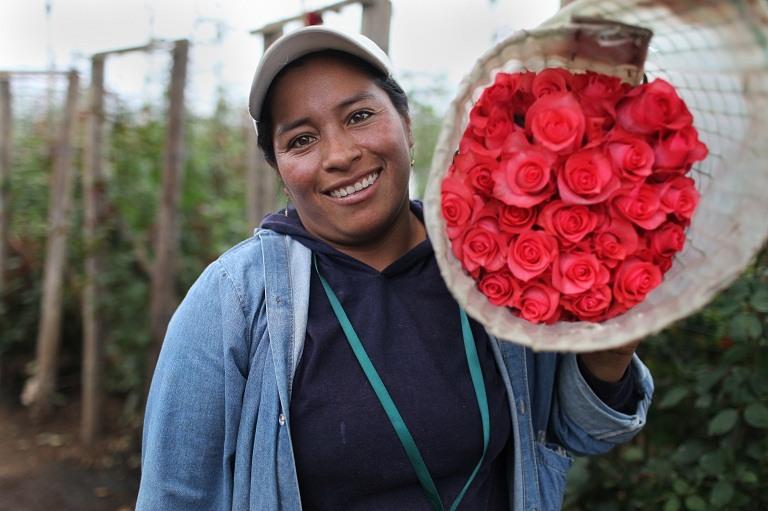

This is part of a series on "The Future of Fair Trade," written with the support of Fair Trade USA. A 501 (c) (3) nonprofit organization, Fair Trade USA is the leading third-party certifier of Fair Trade products in the United States. To follow along with the rest of the series, click here.
By Jenna Larson
It’s National Farmworker Awareness Week, a time to remember that 85 percent of the fruits and vegetables we eat here in the U.S. are hand-picked. That’s right -- the healthy veggies for our healthy lifestyles, sweet fruits for snack-time and even the flowers that brighten our tables. Farmworkers across the globe are out in the fields from dawn to dusk, working hard to feed the world. But at what cost?
A new report from the Los Angeles Times paints a rather disturbing picture of what some laborers face — unsanitary and unsafe conditions, poor housing, exposure to harmful chemicals, debt bondage, and in some cases child labor.
These realities exist, and we must both acknowledge and work to change them. At the same time, we also have to remember that there are many farms out there doing good. For every disheartening reality we see or read about, there are farms working hard to support their workers and directly combat the conditions outlined by the LA Times. Thanks to certification programs like Fair Trade, these farms and farmworkers are empowered to create safe, sustainable, vibrant farming communities.
How is this possible? Let’s examine how the Fair Trade model honors farmworkers, not just during a single week, but all year long.
1. Fair Trade creates fair labor conditions
Fair Trade farmworkers have access to healthcare, regulated working hours, rest and sick days, transparent contracts, freedom of association, and many other benefits — a collection of strict standards that create a more equitable labor model while safeguarding the workers’ welfare and dignity.
2. Fair Trade is committed to worker health and safety
Fair Trade standards cover over 200 criteria protecting worker's rights, in particular their well-being. Farms, packing plants and housing are all audited for health and safety risks — from fire safety and sanitary conditions to the appropriate use of protective equipment to prevent injuries and pesticide exposure. (The National Cancer Institute reports that the rates for certain cancers like Leukemia appear to be higher among agricultural workers, which may be related to pesticide, solvent and dust exposures commonly found on farms. This makes training, protective equipment and elimination of the worst chemicals so important.)
Quality and food safety is another crucial area that's directly affected by worker health and happiness. A farm may have exquisite greenhouses and sanitation practices, but this system can be easily compromised if workers come and go after using dirty bathrooms, if they don't have time or clean facilities to wash their clothes and shower between shifts, or if they must work while sick in order to feed their families.
3. Fair Trade gives workers a voice
Every time a box of Fair Trade produce or bushel of flowers is sold, workers earn a Community Development Premium — money that they earmark, and vote on democratically, to address their most pressing needs. For example, the workers of Bananeras de Urabá SA, a Fair Trade banana producer in Colombia, voted to use their premiums to build an apartment complex. Access to safe, clean housing was one of their greatest needs, and they addressed it together through Fair Trade. They also constructed a bridge to provide a much shorter walk between home and work.
At Wholesum Harvest, a Fair Trade produce farm in Mexico, workers voted to purchase a bus to take them to and from work, and their children to and from school. Previously they would have to travel long distances, and pay expensive bus fares — costing up to a third of a worker’s daily salary. The purchase of the bus saves a tremendous amount of precious time and money.
4. Fair Trade creates direct ties between producers and shoppers
Every fruit, vegetable or flower bearing the Fair Trade label — found at retailers like Whole Foods Market (which purchases over 75 percent of all Fair Trade produce), Costco, Safeway and Earth Fare among others —doesn’t just tell you that you’re buying an ethically-sourced product that supports worker livelihoods. It also helps you create a powerful and more intimate connection with the producers themselves.
Just ask Elvia Almachi, a mother, student and flower farmworker at the Agrogana flower farm in Ecuador. By day she packs roses — most of which go to Whole Foods Market — and by night she attends the adult school program funded by the Fair Trade Premium.
“Please continue to believe in us. It’s through these Fair Trade flowers that hundreds of families like mine continually improve our lives.”-- Elvia Almachi
Take action
If you’re looking to support farmworkers like Elvia, it’s important to use your voice and show your support for Fair Trade:
- Ask your retailer, café, restaurant, school or office to carry Fair Trade products.
- Join or start a Fair Trade Campaign in your community to help get more Fair Trade products in local establishments — you can even help your city government pass a procurement policy or resolution!
- Spread the word about Farmworker Awareness Week on social media, and tell your friends about Fair Trade.
“The fight is never about grapes or lettuce. It is always about people.”--Cesar Chavez
Clean Cars, Dirty Energy: Canada's Electric Car Dilemma


Electric car sales have been doing great in Canada. Considering the fact that public electric vehicle (EV) chargers were a relatively new and untried concept in many Canadian until just recently, the spike in sales is a powerful statement about Canada's growing green economy.
So is the increasing number of provincial incentives popping up to encourage consumers to go electric. To date, at least six of Canada's 13 provinces and territories offer incentives to drivers who will turn in their conventional cars for electric ones.
One of the more interesting is British Columbia's "Scrap It" program, which recently upped the ante for car owners who turn in their gas-guzzlers. Consumers with cars manufactured in 2000 or later can claim an incentive of $3,000 toward an electric car. For those who want to throw away the keys altogether -- and BC's significantly pricey car insurance along with them -- the province offers a plethora of other incentives drivers can claim in return for scrapping their carbon-churners (mind you, none that would cover the cost of a, say, 2010 vehicle at current sales prices in BC).
Still, electric propulsion is becoming a popular idea in provinces like Quebec, which boasts more than 2,500 plug-in registrations to date. With Canada's increasing focus on climate change mitigation, it's to be expected.
A new report, however, debunks the idea that switching over to electric vehicles will, in all cases, reduce carbon emissions. In fact, says Chris Kennedy, a professor in civil engineering at the University of Toronto, the answer to the world's carbon production problems isn't in what kind of propulsion your car relies on, but rather on what produces that power.
Regions -- in this case, provinces of Canada -- that generate their electricity from carbon-rich sources don't really benefit from the use of electric vehicles. That's particularly true in provinces like Alberta, its neighbor Saskatchewan and Nova Scotia on the eastern seaboard, which get the majority of their power from coal-generated plants. In other words, the demand at the EV charger helps to keep those provinces' carbon production high by creating a supply-and-demand for the coal-based power.
"You're better off filling up at the pump," Kennedy said in a recent interview with the Canadian Broadcasting Corp. "Or if you really want to go for something greener, you should be buying a conventional hybrid car."
Those provinces that rely on green sources for their electricity generation can benefit from residents switching to EVs. And yes, British Columbia, with its ample supply of hydro power, is one of them.
Kennedy's findings aren't a total surprise. The question of how to reduce carbon emissions in transportation and power generation has been at the heart of climate change research for years. For Canadian provinces, however, it reinforces the message that the energy sources they support, invest in and develop within their borders may have a broader impact on their futures than previously realized. And while this research isn't likely to stop the oil sands development or hydraulic fracturing investments in Canada, it is one more source of data that suggests that what we develop and how we use it count when it comes to our impact on climate change and the environment.
Image credit: Plug'n Drive Ontario
Monsanto Attacks WHO Over Report Linking Roundup to Cancer
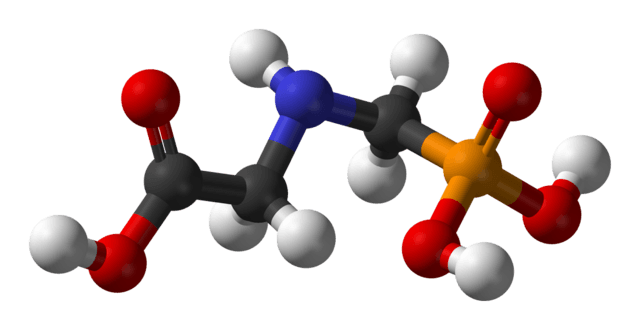

The World Health Organization’s (WHO) cancer research division has issued a report suggesting that the chemicals in one of Monsanto’s most popular products, Roundup, is probably carcinogenic to humans. As a result, the agrochemical and biotech company has launched an attack against the international organization, accusing it of selective science and bias.
The ruckus stems from a study conducted by the International Agency for Research (IARC), which is tasked with researching the causes of cancer, suggesting policies for cancer screening and compiling statistics related to cancer. Along with glyphosate, the weed-killing ingredient used in Roundup, the IARC also suggested four other insecticides could probably cause cancer. One of the other chemicals is malathion, which was sprayed all over California during the early 1980s to stop the spread of the Mediterranean fruit fly — and that controversy was in part why Jerry Brown lost his bid for a U.S. Senate seat after his first run as the state’s governor ended.
Now, Monsanto is accusing the WHO and IARC of sparking another controversy and is demanding that the study be retracted.
According to Monsanto, the IARC study suffers from a bevy of flaws: analysis of data that already exists; the exclusion of data that suggests glyphosate is not a health risk; a conclusion not supported by scientific data; and no firm, established link between the chemical and cancer.
Glyphosate has become increasingly popular the past 20 years since Monsanto introduced crops that were genetically modified to resist its Roundup product. In recent years, however, more weeds have become resistant to glyphosate, and as a result farmers have been using the herbicide with more frequency and in larger amounts. In fact, the U.S. Geological Survey found the use of glyphosate has surged since the early 1990s — from about 20 million pounds in 1992 to almost 300 million pounds in 2012. The results have been particularly worrisome in the Midwest, where much of the nation’s soy, wheat and corn are grown. Glyphosate has been found in streams across the region, though at a level the U.S. Environmental Protection Agency says is well below a maximum contaminant level (MCL) for drinking water.
The U.S. Department of Agriculture regularly reports on pesticide residues in various foods. And, as it announced last December, the department concluded that while pesticides are detectable in many foods, they are within levels that the agency determines to be safe. But as a USDA spokesman explained to Reuters, the agency does not test for glyphosate because the tests are “extremely expensive.” And, as is the case with many pesticides used on commodity crops, such foods are so heavily processed by the time they are on store shelves that any residues are usually eliminated. As with much of this research, the devil is in the details — or in reality, how transparent (or opaque) the studies are, a complaint often hurled at Monsanto.
Some scientists, and of course consumers, are not buying the assumption that glyphosate is safe. Other studies suggesting a link between the herbicide and cancer exist within scientific literature. Researchers including David Schubert, a professor at the Salk Institute for Biological Studies, insist the accumulation of glyphosate in the environment poses too many health risks. Schubert was quoted by Reuters as saying that glyphosate should be banned for the risks it poses to cancer and tumor growth.
Watch for the battle to become more heated in the coming months. The EPA, which can set limits on the use of glyphosate or even ban it, assesses IARC reports when making final regulatory decisions. Monsanto, and its allies in Congress, will be more than ready for any fight.
Image credit: Benjah-bmm27
Guardian Petition to Foundations: Don’t Fund Fossil Fuels
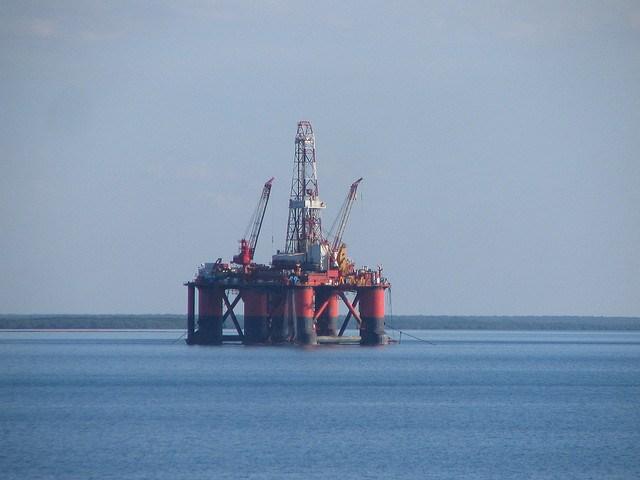

A Guardian petition calls on the Bill and Melinda Gates Foundation and the Wellcome Trust to divest from fossil fuels.
More than 140,000 people have signed the petition since the Guardian's editor-in-chief, Alan Rusbridger, launched it on Monday with 350.org.
The Bill and Melinda Gates Foundation --the largest private foundation in the world -- is well known to most Americans, but some of us have never heard of the Wellcome Trust.
On its website, the organization describes itself a "global charitable foundation dedicated to improving health." It is also one of the largest funders of medical research, according to the Guardian.
In other words, two large charitable foundations with global reach are being asked to stop funding the dirty fuels that contribute to climate change. Specifically, they are being asked to divest from the top 200 fossil fuel companies within five years.
“We’re at a tipping point and it’s become clear that people and institutions of good conscience have to cut these ties,” said Bill McKibben, founder of 350.org. “Now 100,000 people from around the world have combined to say that these giant philanthropies need to walk their talk.”
The Bill and Melinda Gates Foundation held more than $1.4 billion of investments in fossil fuel companies as of its 2013 tax filing, a Guardian analysis found. The Wellcome Trust had a minimum of $520.8 million invested in fossil fuel companies last year, according to the Guardian.
So far, neither company has responded favorably to the petition, which is a shame. Climate change is all too real. The Earth’s average temperature has risen by 1.4 degrees Fahrenheit over the last century, as the U.S. Environmental Protection Agency states. The average temperature is projected to increase by another 2 degrees to 11.5 degrees Fahrenheit over the next 100 years.
The impacts of climate change are already being felt. The Third National Climate Assessment report, released by the U.S. Global Change Research Program, lists various impacts that are presently visible in the U.S. The impacts include increased wildfires in the Southwest caused by increased heat and drought. California is currently experiencing its fourth year of one of its worst droughts in recent history. Last fall, a Stanford University study linked California’s drought to climate change.
Last year was the hottest year on record. Scientists at NASA and the National Oceanic and Atmospheric Administration (NOAA) ranked 2014 as the warmest year since records were first kept in 1880. The Japan Meteorological Agency also ranked 2014 as the warmest year on record.
It is clear that the Earth’s temperatures are increasing and that is causing havoc for the planet’s residents, both human and animal alike. It is time for charitable organizations like the Bill and Melinda Gates Foundation and the Wellcome Trust to divest from climate change. Funding the fossil fuel companies that cause a big portion of the greenhouse gas emissions that are heating up the planet is not charitable.
Image credit: Ken Hodge